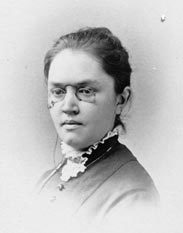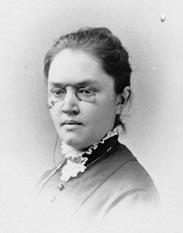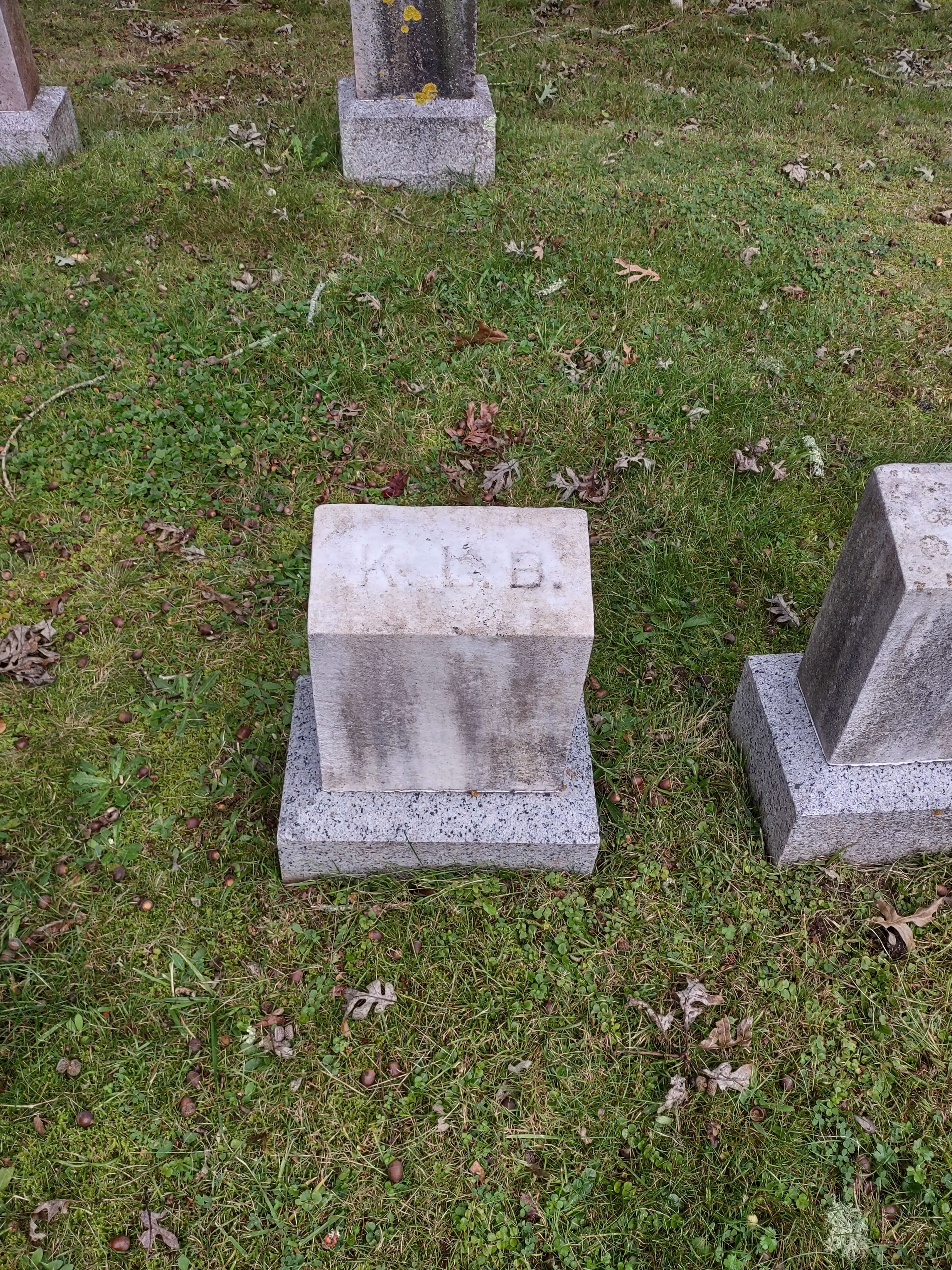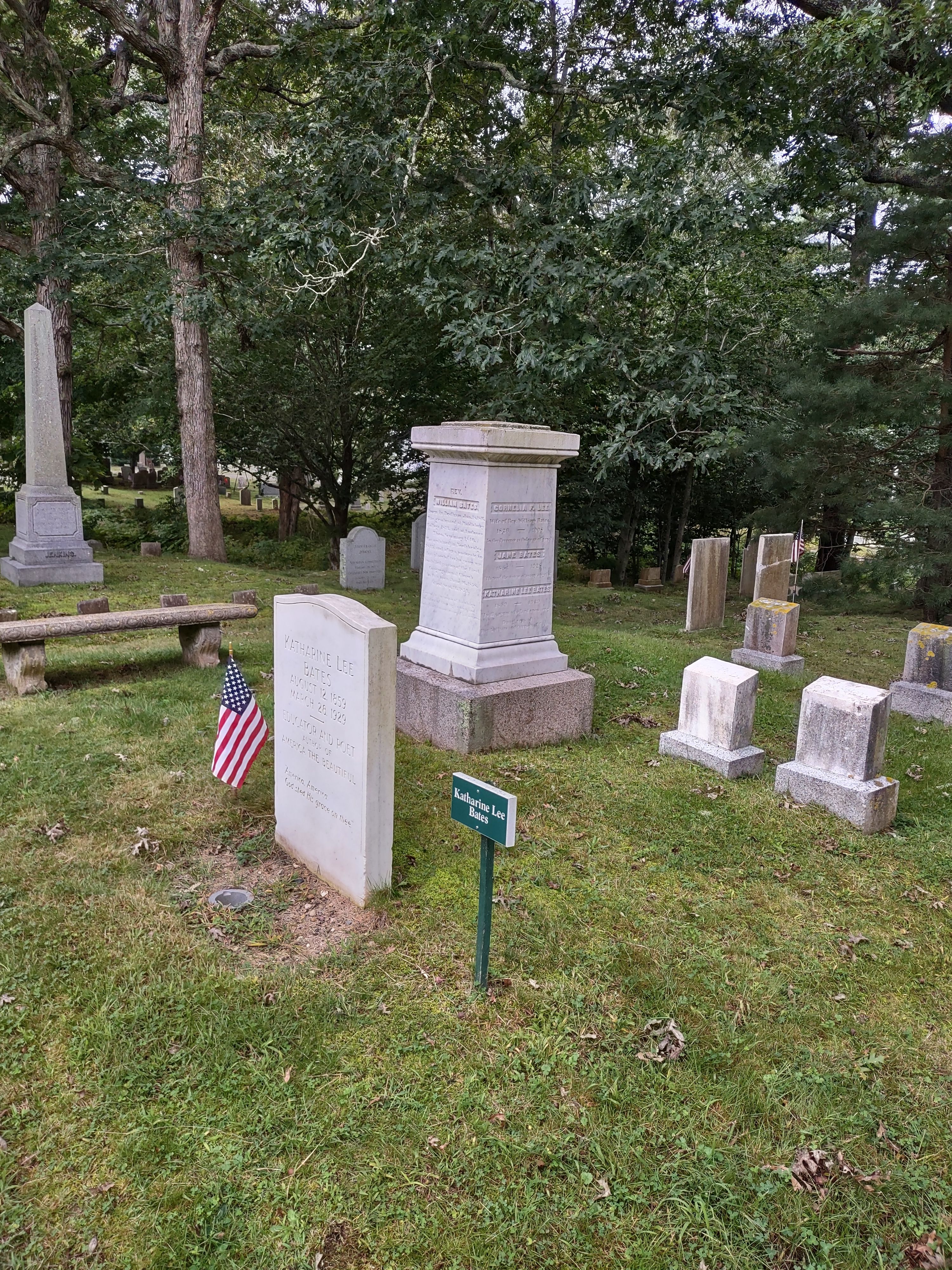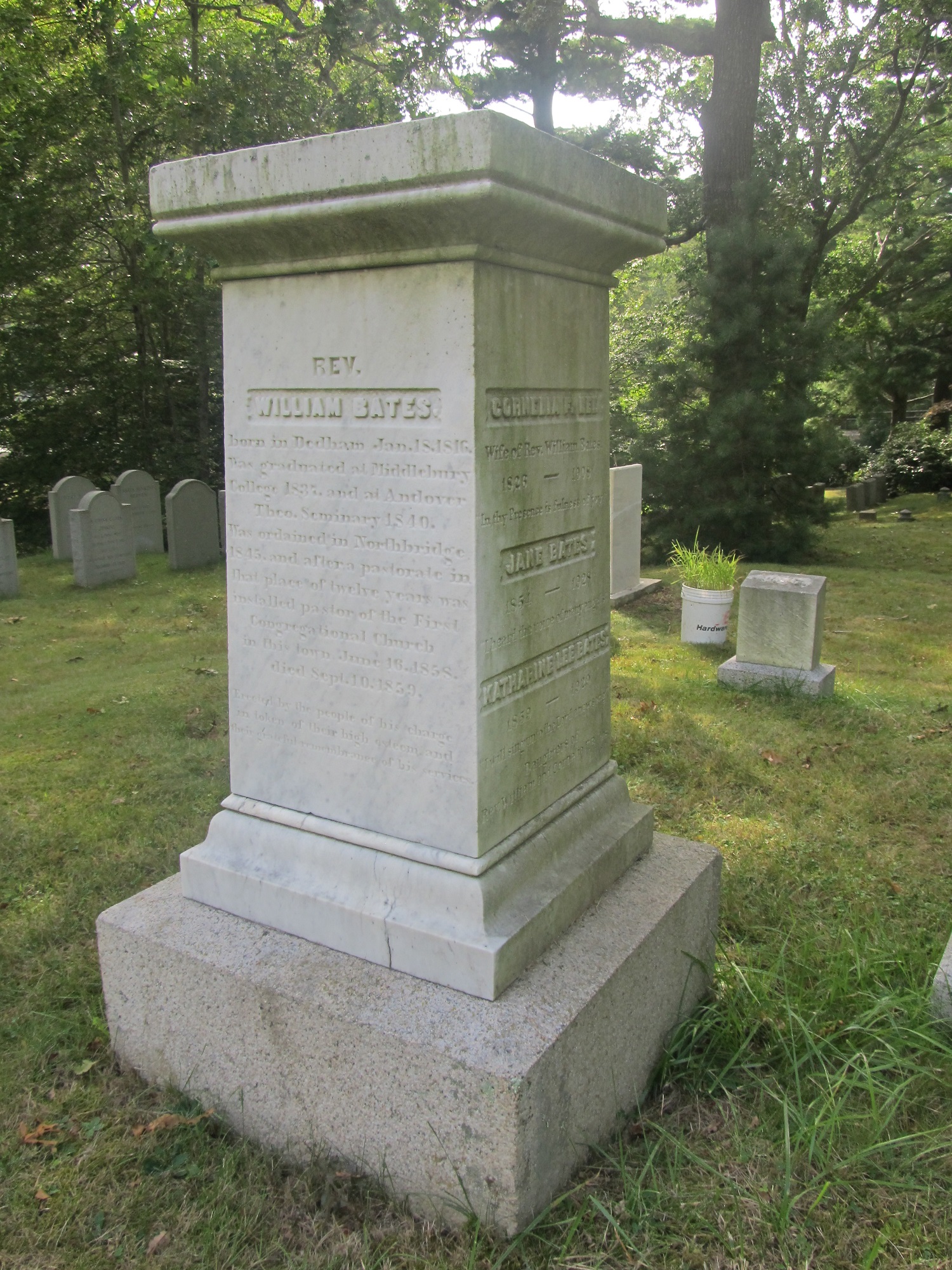Keen with words, she kept a little journal and was regularly making entries by age nine. Art the age of twelve, she moved with her family to Graniteville, Massachusetts, now known as Wellesley Hills. She attended Wellesley High School, graduating in 1874. In 1878, she graduated from the more advanced Newton High School, then entered Wellesley College, graduating with a Bachelor of Arts degree in 1880.
From 1880 to 1925, she taught first at Dana Hall Preparatory School for Wellesley College, and then, beginning in 1886, as an instructor at Wellesley College, where she advanced to a full Professor in charge of the English Literature department. A tremendously popular professor, Eleanor Conant Yeager of Falmouth, who knew Bates well, called her "childlike but intellectual. She had great rapport with her students at Wellesley, because of her rare sense of humor. She was serious when she needed to be, but realized the importance of humor."
Katherine Bates traveled extensively both in the United States and abroad. She attended Oxford University and took four one-year sabbaticals to Europe. She was an esteemed academic and writer of stories, articles, poems as well as children's plays and verses.
"America the Beautiful" first appeared in print in "The Congregationalist," a weekly journal, on July 4, 1895. It is considered by some to be America's unofficial second national anthem. Its four stanzas, hastily scribbled into a notebook on a trip to the Western Plains in 1893, would attain great fame. At the apex of Pikes Peak in Colorado Springs, Colorado, she was so moved by the beauty that was her country, that she wrote what later became "America the Beautiful." While lecturing at the summer session at Colorado College, she joined an expedition to the summit of Pikes Peak in a prairie wagon. She wrote, "It was then and there, as I was looking out over the sea-like expanse..." that she found her ultimate inspiration. After some revision, the new version was published in "The Boston Evening Transcript" on November 19, 1904.
Much criticism of the lyric poem centered on her use of the word "beautiful," which some called hackneyed, but she refused to change that word, for she claimed it best described America. Following the 1904 publication, part of the third stanza was altered, thereafter, the poem stayed the same and Bates retained the copyright, protecting it from misprints and further changes. The only payment she ever received for her efforts was a small check from "The Congregationalist" when the poem was first published.
In 1926, the National Federation of Music Clubs held a contest to put the poem to music, but none of the entries were judged to be adequate. The poem has been sung to a variety of music, and she never chose a preferred tune. Today, the song sung to Samuel A. Ward's "Materna." Also, in 1926, a strong push was made to adopt the hymn as the national anthem. The "Star-Spangled Banner" won instead on March 3, 1931, President Herbert Hoover signed a bill proclaiming it the official National Anthem.
Bates continued to teach and publish. She also wrote several odes to her beloved town of Falmouth where a plaque and a statue of her stand on Main Street near the Village Green where one can tour her childhood home.
Keen with words, she kept a little journal and was regularly making entries by age nine. Art the age of twelve, she moved with her family to Graniteville, Massachusetts, now known as Wellesley Hills. She attended Wellesley High School, graduating in 1874. In 1878, she graduated from the more advanced Newton High School, then entered Wellesley College, graduating with a Bachelor of Arts degree in 1880.
From 1880 to 1925, she taught first at Dana Hall Preparatory School for Wellesley College, and then, beginning in 1886, as an instructor at Wellesley College, where she advanced to a full Professor in charge of the English Literature department. A tremendously popular professor, Eleanor Conant Yeager of Falmouth, who knew Bates well, called her "childlike but intellectual. She had great rapport with her students at Wellesley, because of her rare sense of humor. She was serious when she needed to be, but realized the importance of humor."
Katherine Bates traveled extensively both in the United States and abroad. She attended Oxford University and took four one-year sabbaticals to Europe. She was an esteemed academic and writer of stories, articles, poems as well as children's plays and verses.
"America the Beautiful" first appeared in print in "The Congregationalist," a weekly journal, on July 4, 1895. It is considered by some to be America's unofficial second national anthem. Its four stanzas, hastily scribbled into a notebook on a trip to the Western Plains in 1893, would attain great fame. At the apex of Pikes Peak in Colorado Springs, Colorado, she was so moved by the beauty that was her country, that she wrote what later became "America the Beautiful." While lecturing at the summer session at Colorado College, she joined an expedition to the summit of Pikes Peak in a prairie wagon. She wrote, "It was then and there, as I was looking out over the sea-like expanse..." that she found her ultimate inspiration. After some revision, the new version was published in "The Boston Evening Transcript" on November 19, 1904.
Much criticism of the lyric poem centered on her use of the word "beautiful," which some called hackneyed, but she refused to change that word, for she claimed it best described America. Following the 1904 publication, part of the third stanza was altered, thereafter, the poem stayed the same and Bates retained the copyright, protecting it from misprints and further changes. The only payment she ever received for her efforts was a small check from "The Congregationalist" when the poem was first published.
In 1926, the National Federation of Music Clubs held a contest to put the poem to music, but none of the entries were judged to be adequate. The poem has been sung to a variety of music, and she never chose a preferred tune. Today, the song sung to Samuel A. Ward's "Materna." Also, in 1926, a strong push was made to adopt the hymn as the national anthem. The "Star-Spangled Banner" won instead on March 3, 1931, President Herbert Hoover signed a bill proclaiming it the official National Anthem.
Bates continued to teach and publish. She also wrote several odes to her beloved town of Falmouth where a plaque and a statue of her stand on Main Street near the Village Green where one can tour her childhood home.
Bio by: R. Digati
Inscription
EDUCATOR AND POET
AUTHOR OF
AMERICA THE BEAUTIFUL
“America, America,
God shed His grace on thee.”
Family Members
Advertisement
